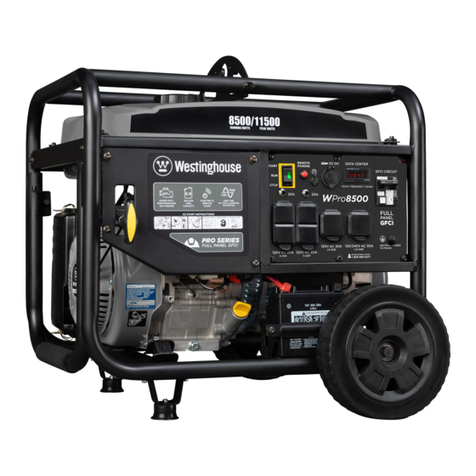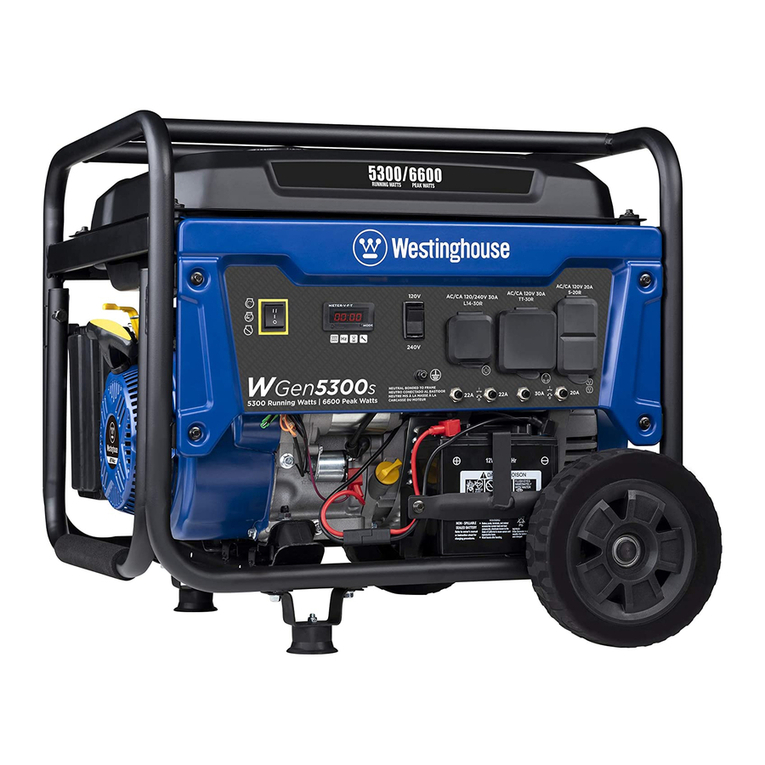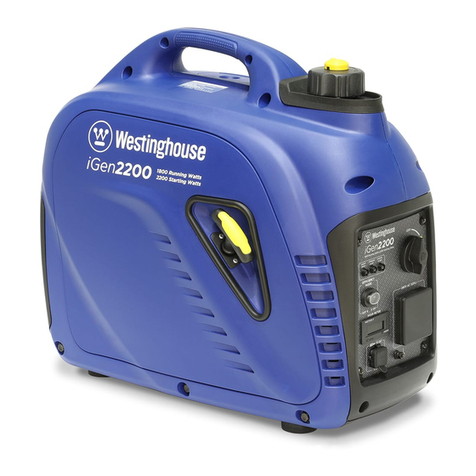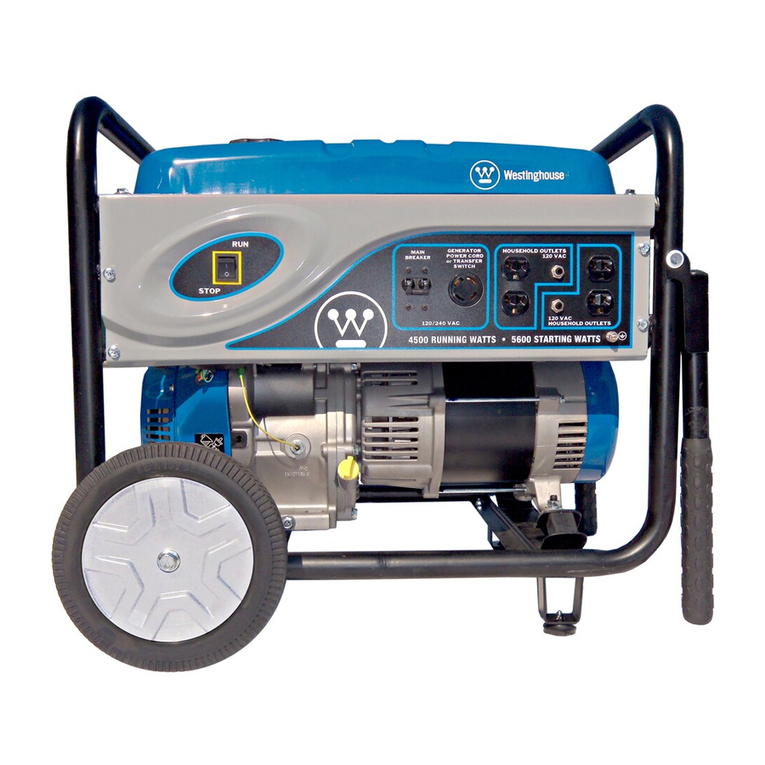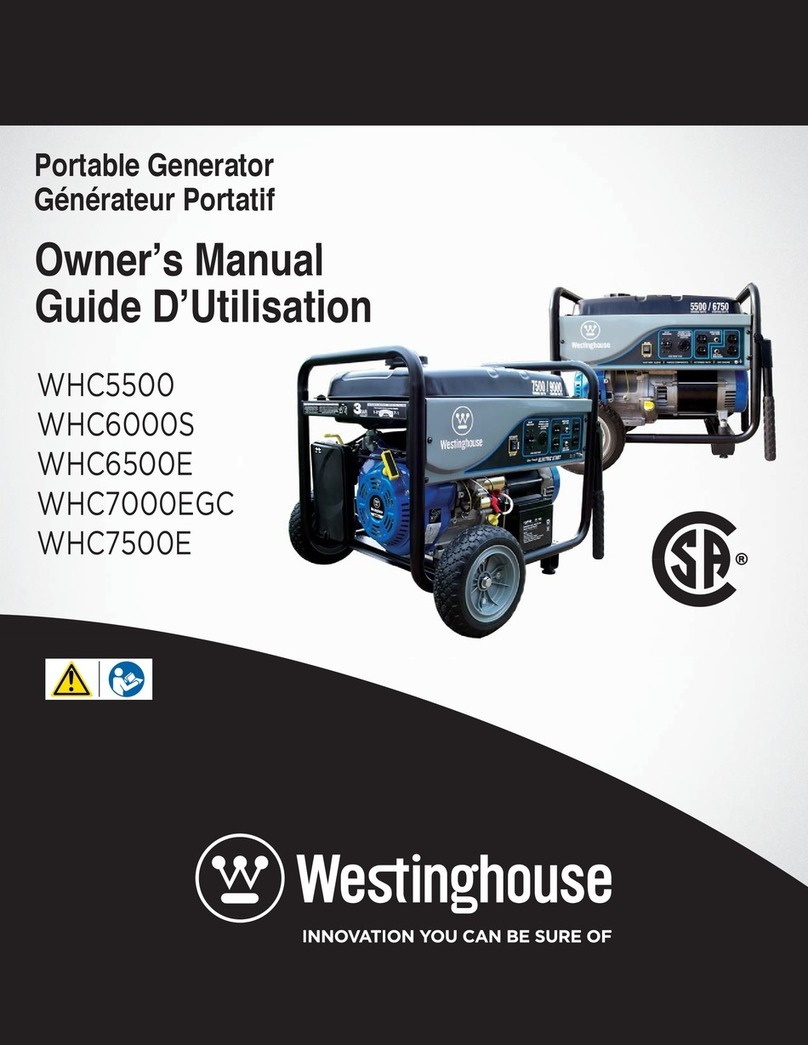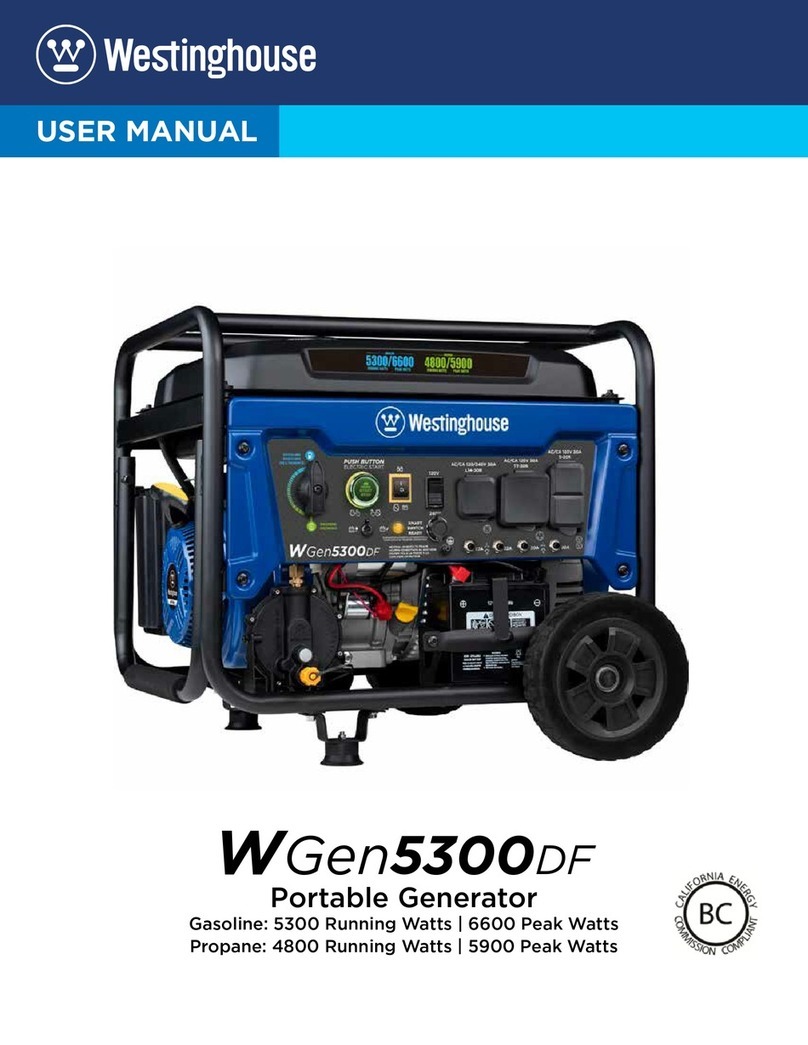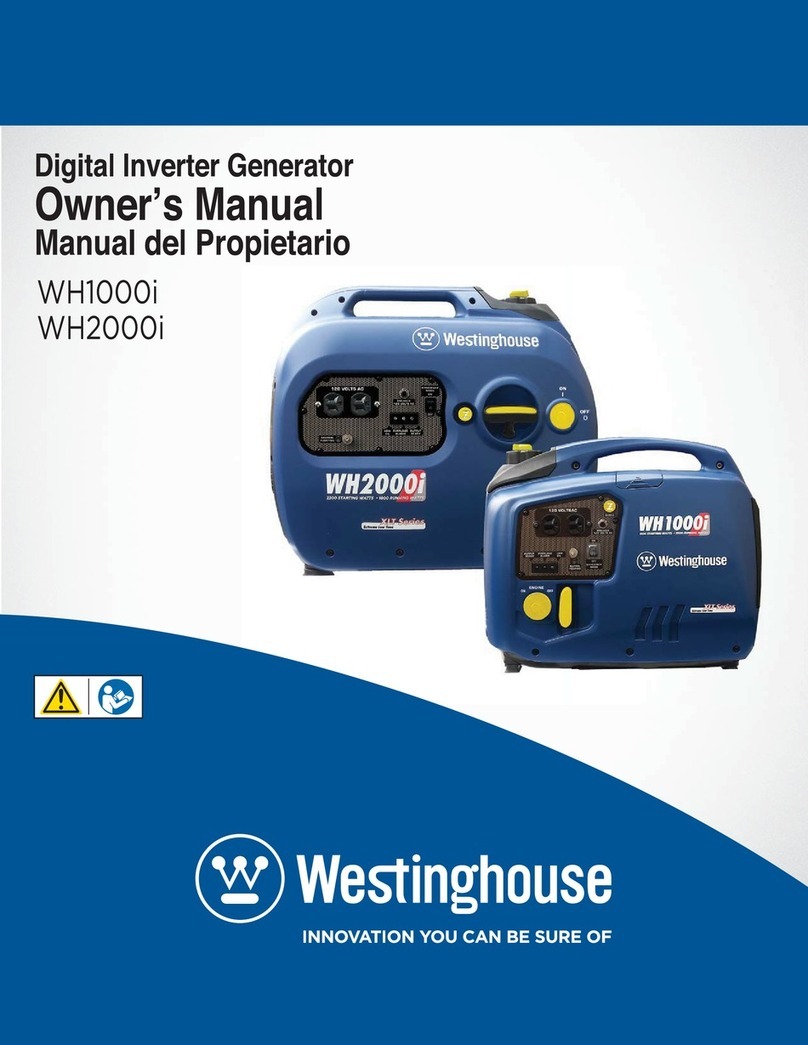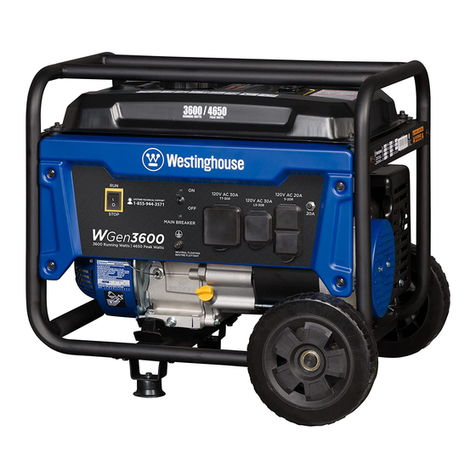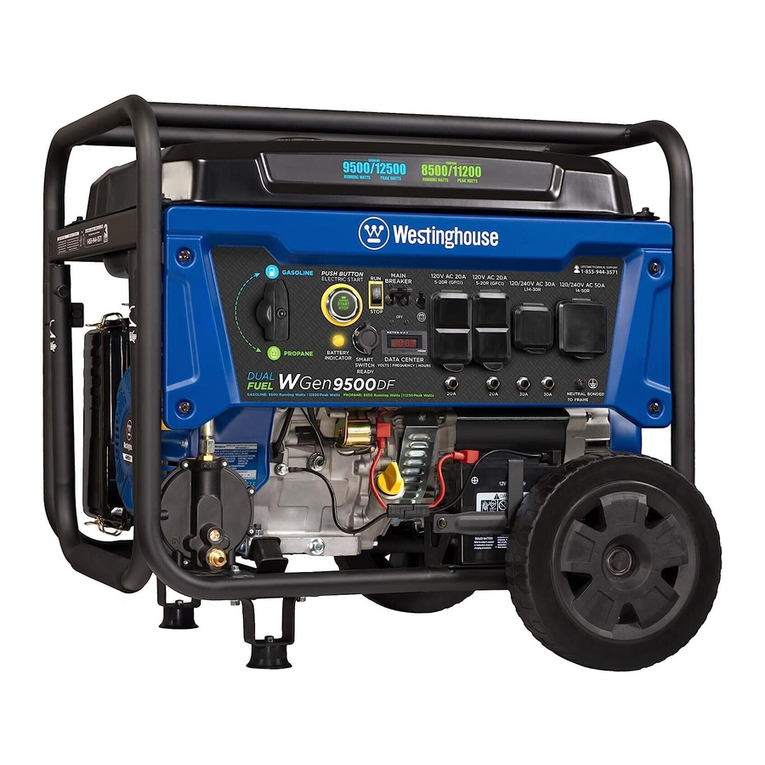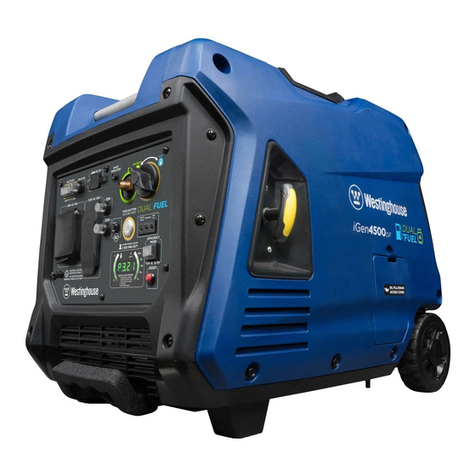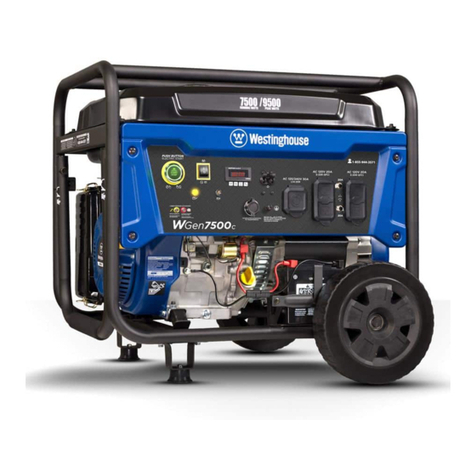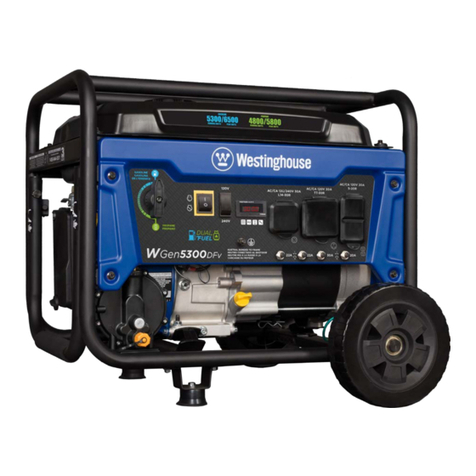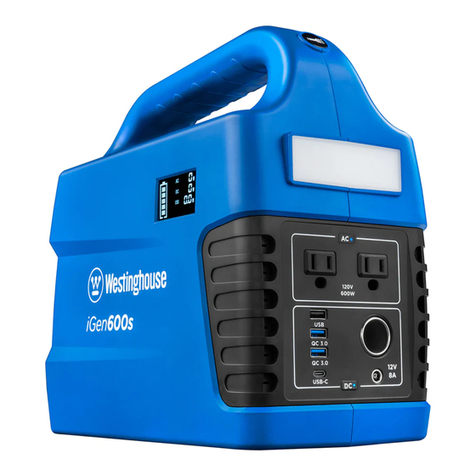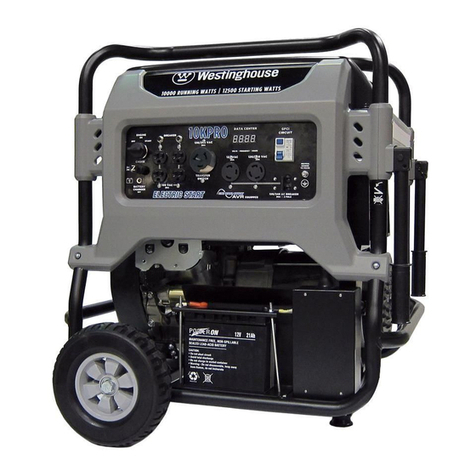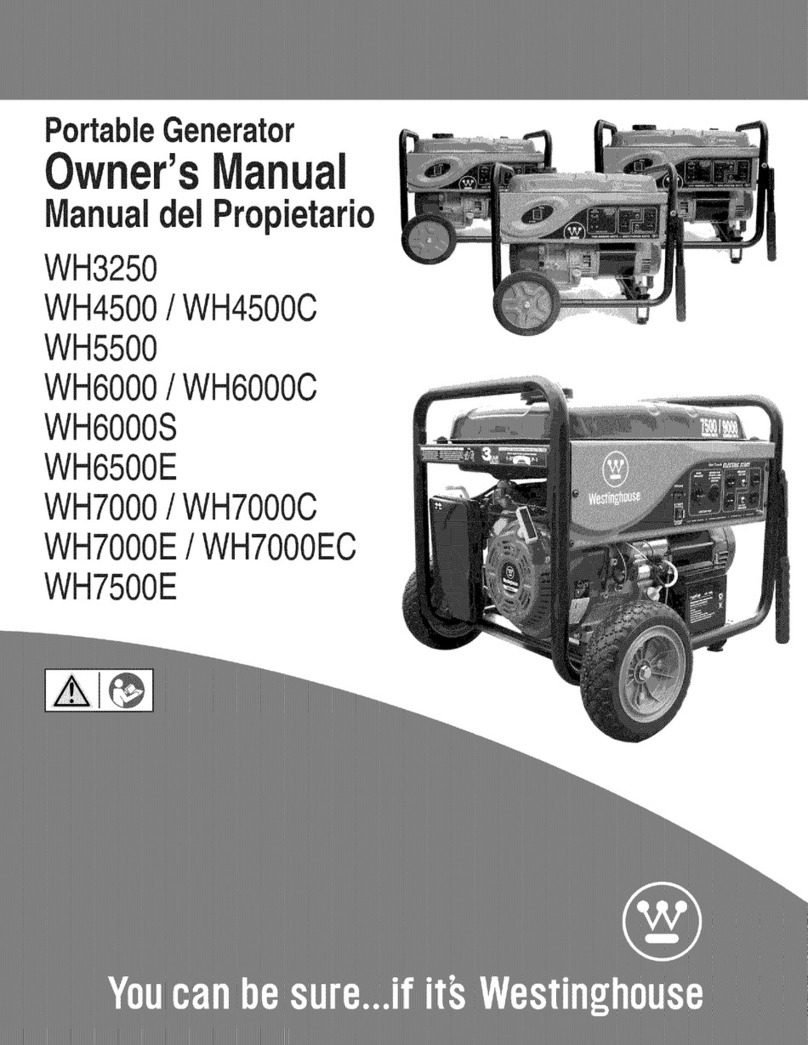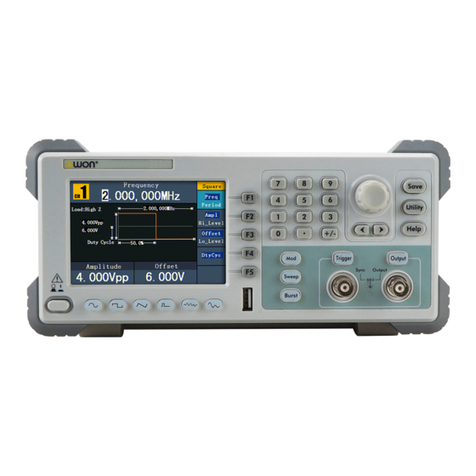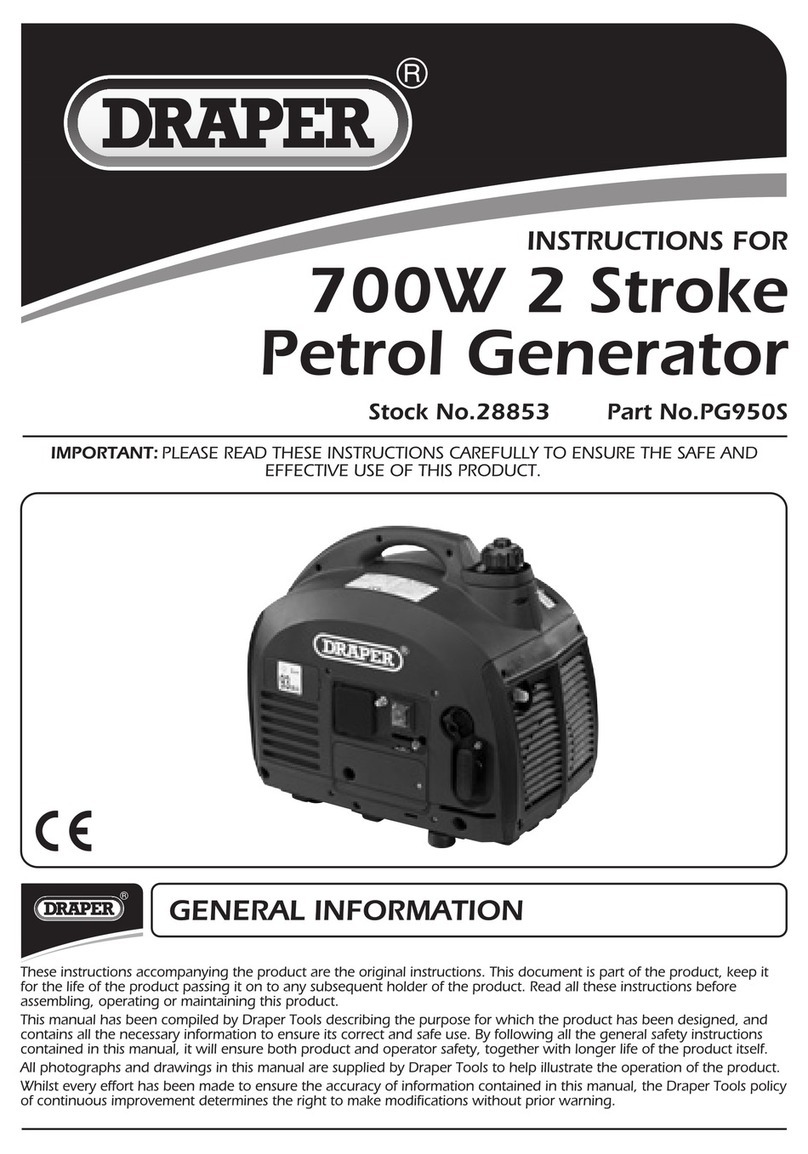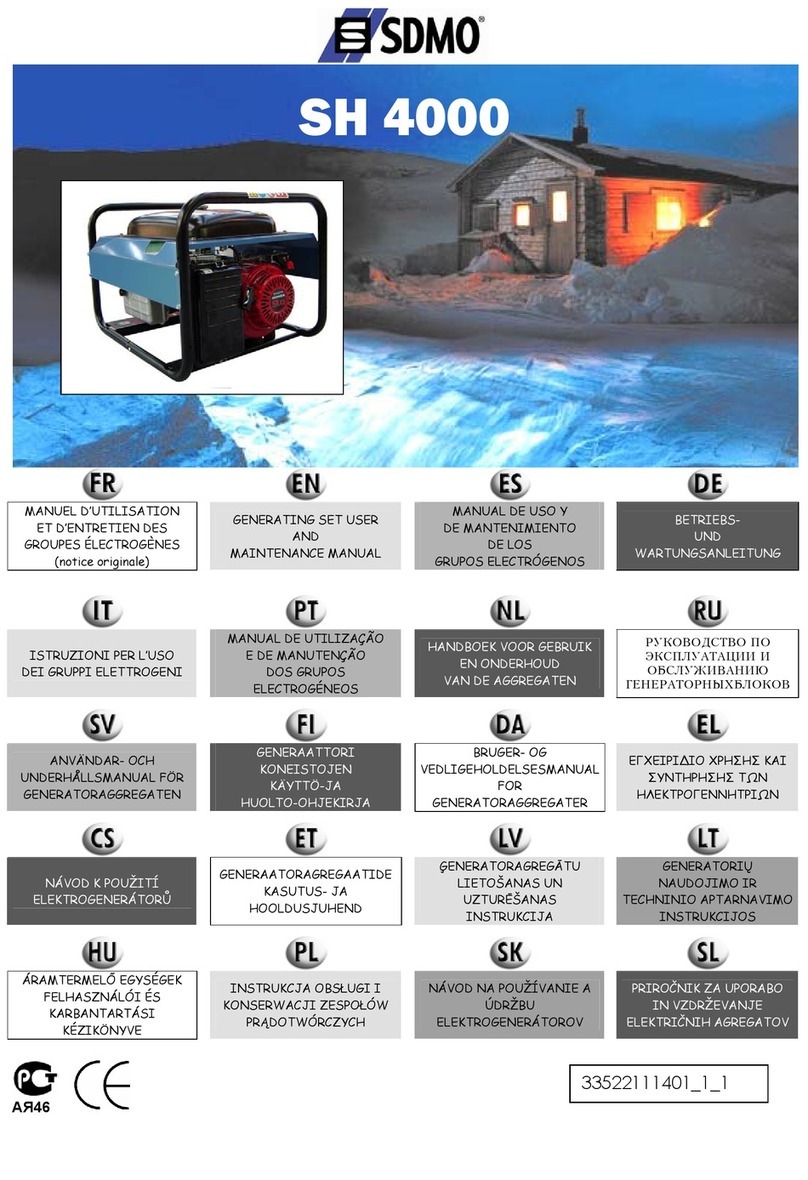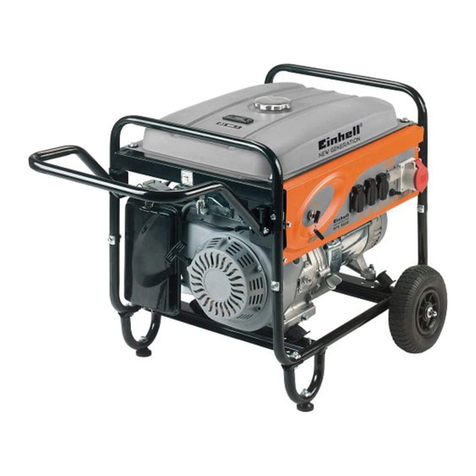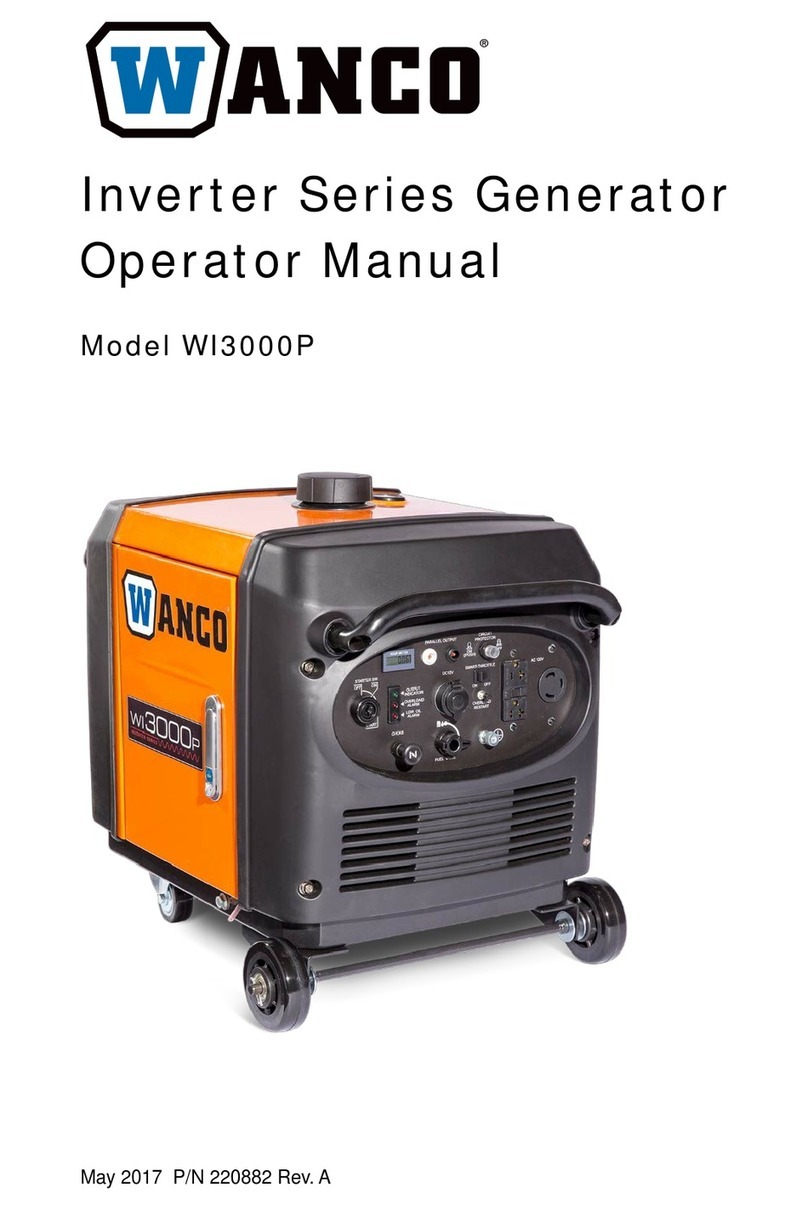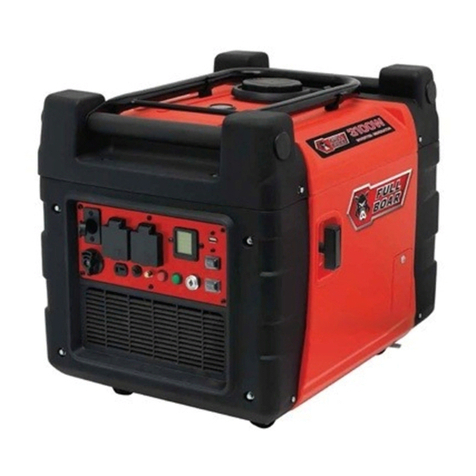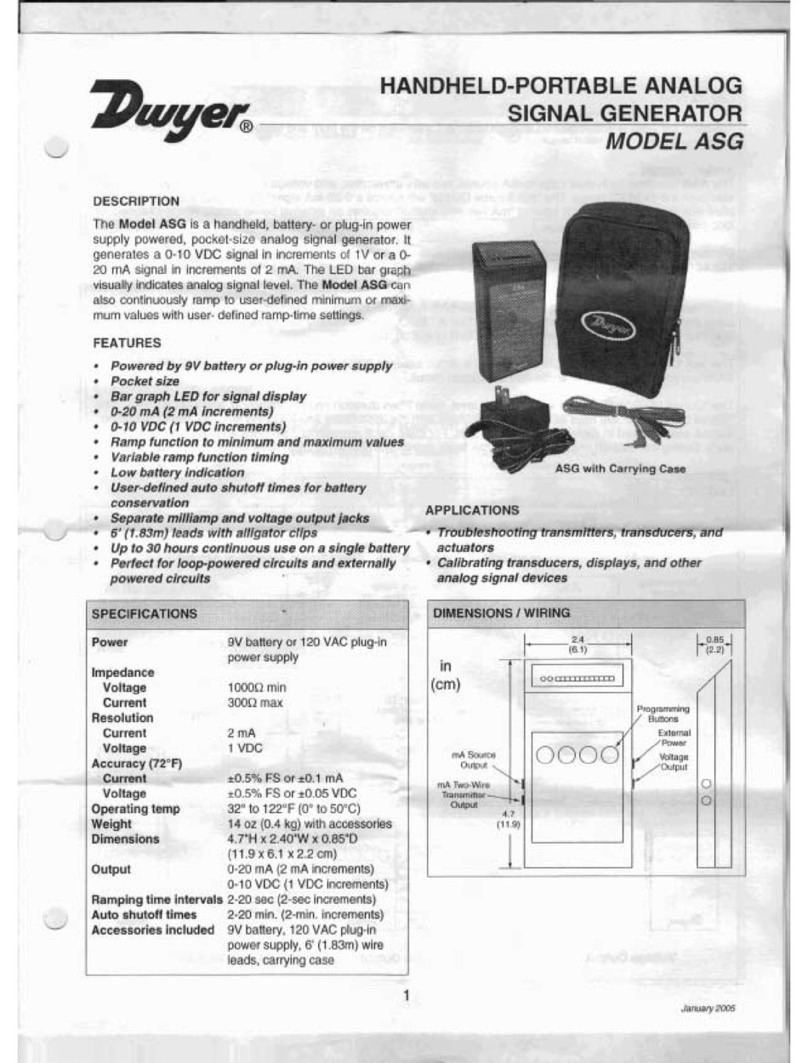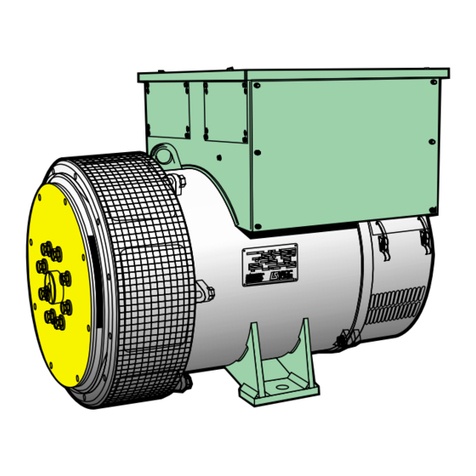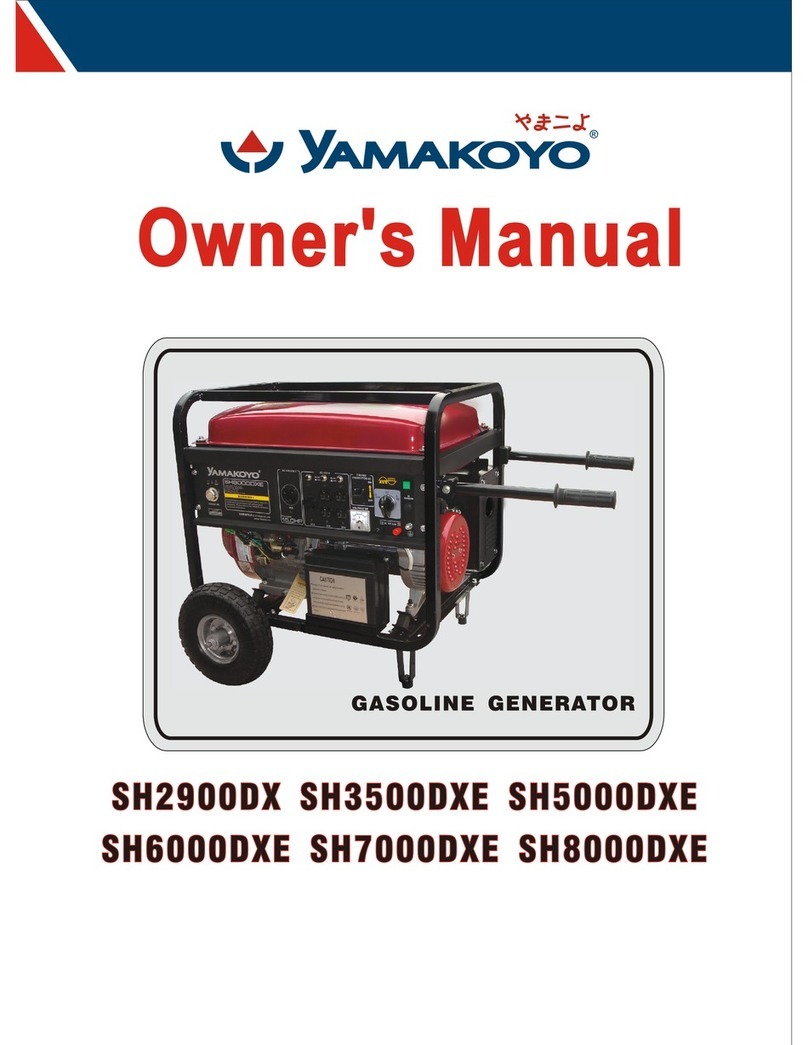
SAFETY
2
GENERAL SAFETY RULES
DANGER
Never use the generator in a location
that is wet or damp. Never expose the
generator to rain, snow, water spray
or standing water while in use. Protect
the generator from all hazardous
weather conditions. Moisture or ice
can cause a short circuit or other
malfunction in the electrical system.
Never operate the generator in
an enclosed area. Engine exhaust
contains carbon monoxide. Only
operate the generator outside and
away from windows, doors and vents.
WARNING
Voltage produced by the generator
could result in death or serious injury.
• Never operate the generator in
rain or a floodplain unless proper
precautions are taken to avoid being
subject to rain or flood.
• Never use worn or damaged
extension cords.
• Always have a licensed electrician
connect the generator to any fixed
electrical installation.
• Never touch an operating generator
if the generator is wet or if you have
wet hands.
• Never operate the generator in
highly conductive areas such as
around metal decking or steel
works.
• Always use earthed extension cords.
Always use three-wire or double-
insulated power tools.
• Never touch live terminals or
bare wires while the generator is
operating.
• Keep animals and children away
from the generator at all times.
WARNING
Petrol fuel liquid and vapours are
extremely flammable and explosive
under certain conditions.
• Always refuel the generator
outdoors, in a well-ventilated area.
• Never remove the fuel cap while the
engine is running.
• Never refuel the generator while
the engine is running. Always turn
engine off and allow the generator
to cool before refuelling.
• Only fill fuel tank with unleaded
petrol.
• Keep away from sparks, open
flames or other forms of ignition
such as matches, cigarettes, CB
radios and mobile phones when
refuelling.
• Never overfill the fuel tank. Leave
room for fuel to expand. Overfilling
the fuel tank can result in a sudden
overflow of fuel and result in spilled
fuel coming in contact with hot
surfaces. Spilled fuel can ignite. If
fuel is spilled on the generator, wipe
it up immediately and dispose of
rags properly. Allow area of spilled
fuel to dry before operating the
generator.
• Wear eye protection while refuelling.
• Never use fuel as a cleaning agent.
• Store any fuel containers in a well-
ventilated area, away from any
combustibles or source of ignition.
• Check for fuel leaks after refuelling.
Never operate the engine if a fuel
leak is discovered.
• Equip the operating area with
a Class ABE or BE portable fire
extinguisher.

